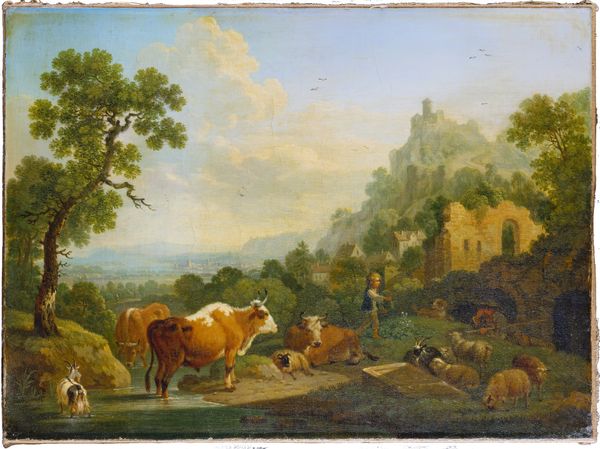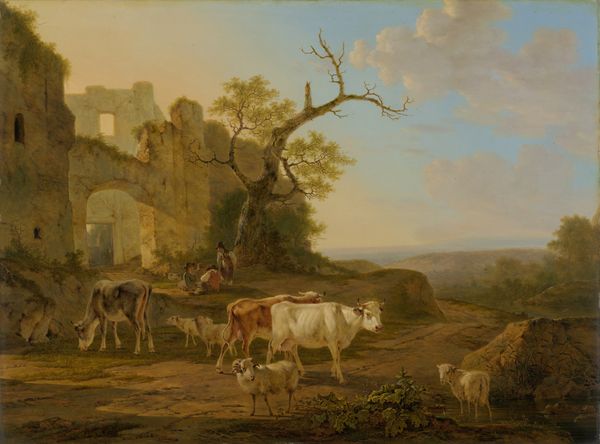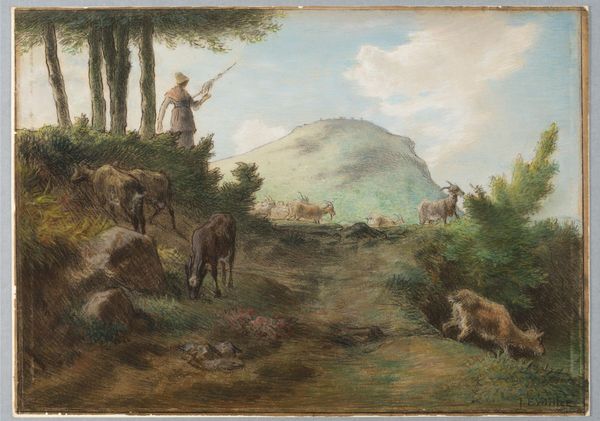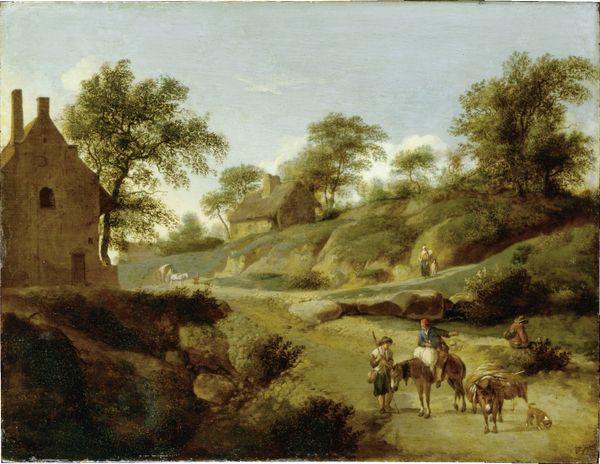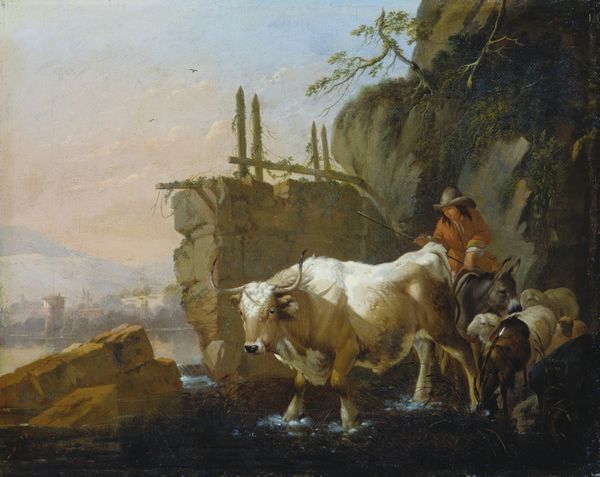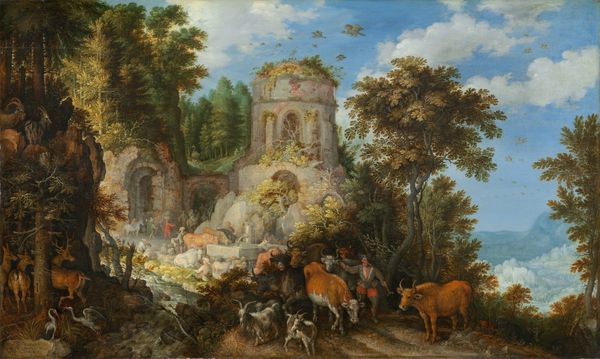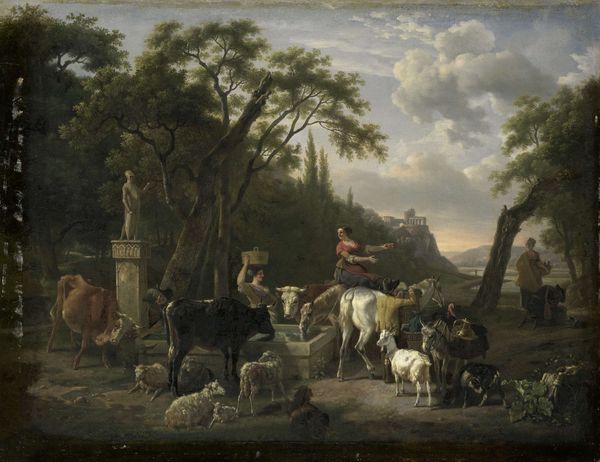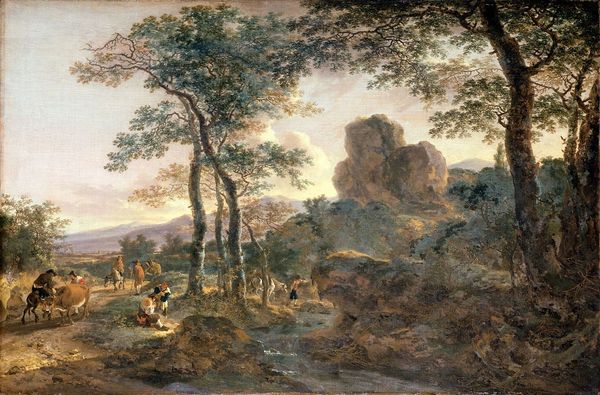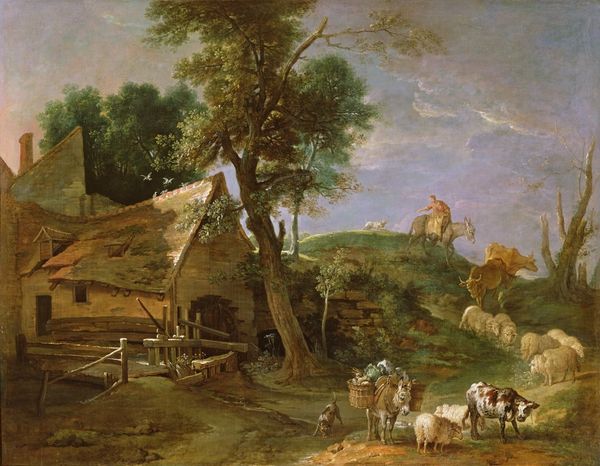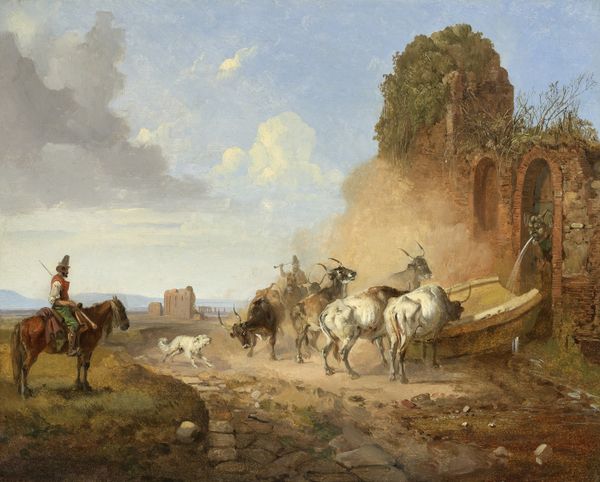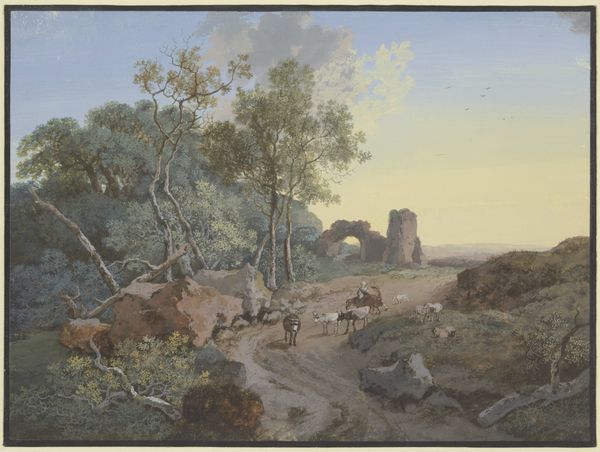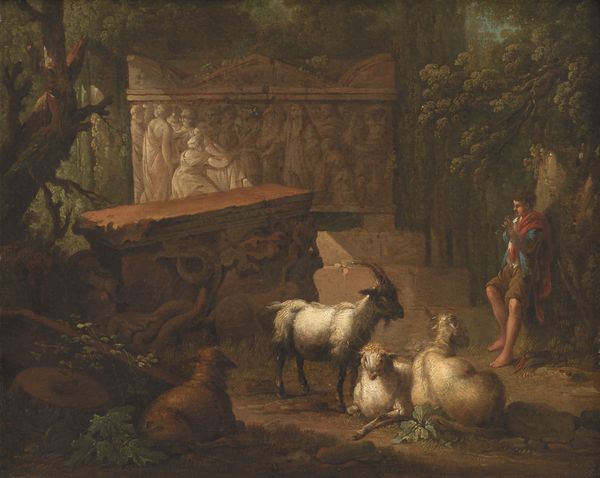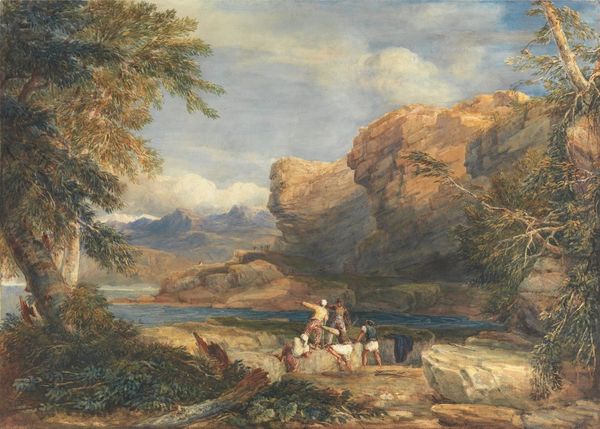
oil-paint, canvas
#
portrait
#
baroque
#
animal
#
oil-paint
#
landscape
#
impressionist landscape
#
figuration
#
oil painting
#
canvas
#
child
#
14_17th-century
#
genre-painting
#
history-painting
Dimensions: 100.5 x 121.2 cm
Copyright: Public Domain
Editor: This is Johann Heinrich Roos’ "Shepherd Family Resting near an Ancient Ruin," painted around 1680, using oil on canvas. The classical ruins set a very serene and picturesque tone, yet I find the inclusion of the animals almost too idyllic, as if deliberately obscuring something. What's your take on this, thinking about how it was produced and what it might tell us about its society? Curator: It's important to consider the labor involved here. Roos was clearly commissioned to produce a pleasing image for a specific clientele. Notice how the materiality of the paint itself mimics the textures it portrays: rough stone, soft animal fur. What does this heightened realism, achieved through meticulous craftsmanship, signify in relation to the depicted subject matter, the rustic life? Editor: Well, I see your point. It’s easy to romanticize the rural, but creating art, especially in oil on canvas, would have been costly. Was there a disconnect, perhaps, between the patrons and the reality of agricultural life? Curator: Precisely! Consider the consumption of such images. Wealthy landowners adorned their estates with these paintings. They are consuming an idealized version of pastoral life, divorced from the actual labor and material conditions of those who lived it. These weren't simply landscapes; they were carefully crafted commodities meant to convey status and a certain cultivated sensibility. Do you notice how Roos emphasizes the health and abundance of the livestock? Editor: Yes, almost to an exaggerated degree! So it’s not just a nice landscape, it’s a subtle message about prosperity, displayed through the representation of productive land and animals… kind of like conspicuous consumption, but in paint form. Curator: Exactly. The ruin in the background isn't merely picturesque, either; it acts as a symbol of the past providing for the present—a commentary on enduring land ownership and societal order, fabricated and carefully constructed. The artist had to select the ruin carefully as this artwork became both social statement, financial transaction and also, ultimately, inventory. Editor: This has changed my perspective. I won’t see idyllic scenes in quite the same way now! Thanks! Curator: My pleasure. The materials and modes of production are vital to decoding any artwork’s meaning and function in its time.
Comments
stadelmuseum about 2 years ago
⋮
Native to the Palatinate, the Roos family emigrated to the Netherlands during the Thirty Years’ War. In 1647, while training in Amsterdam, the young Johann Heinrich Roos met Karel Dujardin, one of the leading ‘Italianists’. Roos would feel indebted to those painters of rural idylls his whole life long. His scenes depict animals and people in a southern light, at peace and far away from the violence of war and the bustle of the city. As the ruins suggest, this imagined Arcadia was in Italy – also a land of longing for the citizens of Frankfurt, where Roos painted this work.
Join the conversation
Join millions of artists and users on Artera today and experience the ultimate creative platform.

